The 13 World Heritage sites in Switzerland you need to visit this year
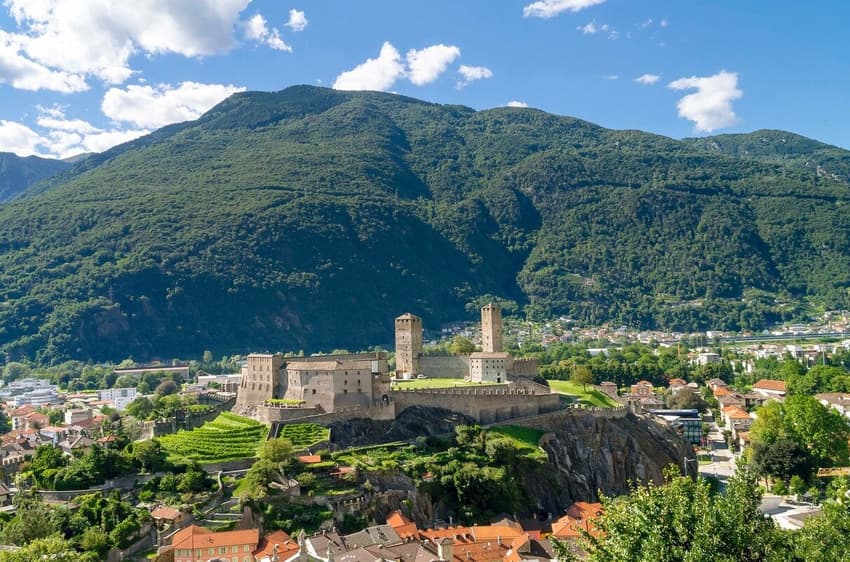
Switzerland's UNESCO World Heritage includes 13 cultural and natural sites. With their spectacular views and impressive histories, they are all worth a visit.
Whether you’re visiting Switzerland for the first time or are simply in the mood to discover more of your new home country, these 13 UNESCO World Heritage sites are a great place to start.
Old City of Bern
The Old City (Altstadt) of Switzerland’s capital has been a UNESCO World Heritage Site since 1983. When walking its charming cobblestone streets and taking in the many Renaissance-style fountains, sandstone buildings and six kilometres of arcades, it’s not surprising to learn that the Old City’s layout has remained largely unchanged since its construction during the 12th to 15th century.
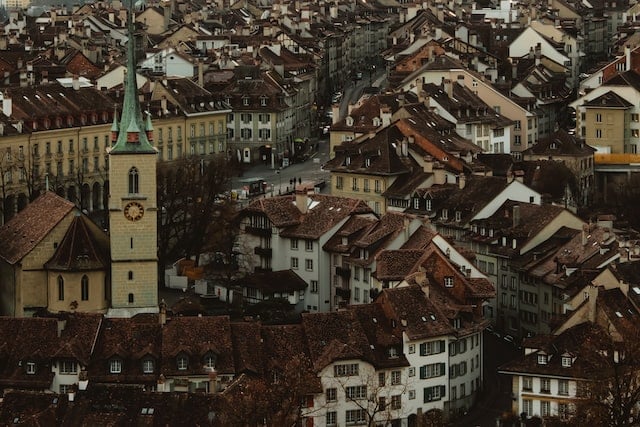
The old town of Bern. Photo by Joel & Jasmin Førestbird on Unsplash
Three Castles of Bellinzona
The Bellinzona sites consist of a group of fortifications clustered around the castle of Castelgrande, which overlooks the entire Ticino valley and connects to castle Montebello via a series of walls originally erected to protect the old city. The sites became UNESCO-protected in 2000 and additionally include a third castle, the Sasso Corbaro, which was built outside the city.
Rhaetian Railway in the Albula / Bernina Landscapes
The Rhaetian Railway in the Albula and Bernina Landscapes combines two historic railway lines that cross the Swiss Alps through two passes offering spectacular views to locals and tourists alike. Built in the 20th century, the lines enable easy and fast access to previously isolated alpine settlements via an overall 55 tunnels and galleries. They also sport an impressive 196 viaducts and bridges.
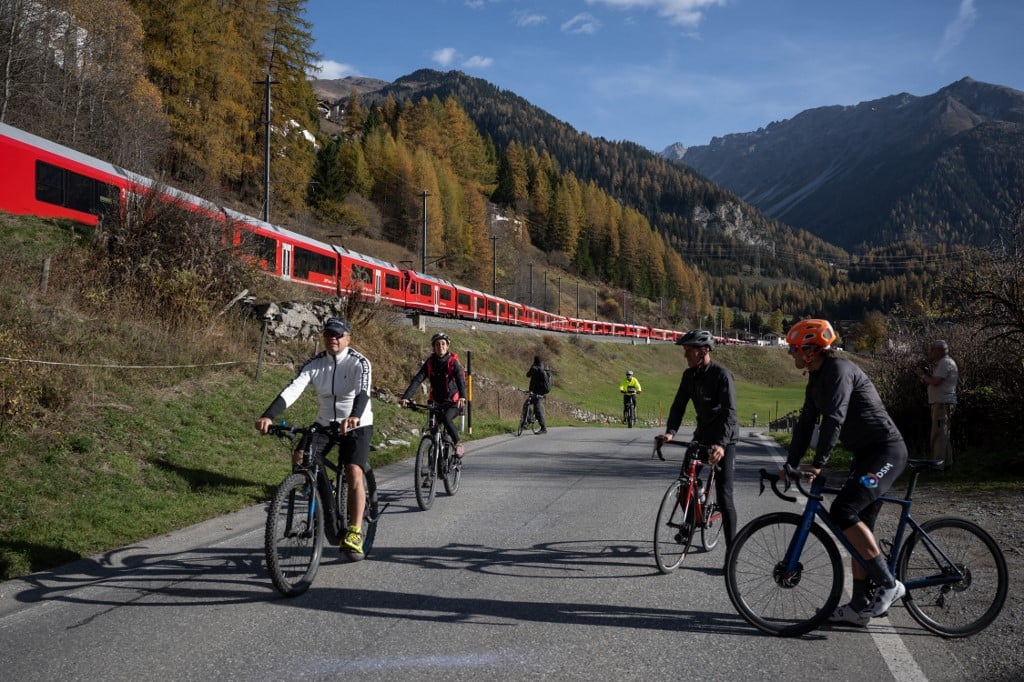
Cyclists watch as a 1910-metre-long train with 100 cars passes near Bergun, in October 2022, during a record attempt by the Rhaetian Railway (RhB) of the World's longest passenger train, to mark the Swiss railway operator's 175th anniversary. (Photo by Fabrice COFFRINI / AFP)
La Chaux-de-Fonds / Le Locle
Built some 1,000 metres above sea level in the Jura mountains on land ill-suited to farming, La Chaux-de-Fonds and Le Locle are sometimes referred to as the very foundation of the watchmaking industry. Watch enthusiasts are well advised to visit La Chaux-de-Fonds’ Musée International d'Horlogerie. The museum is home to more than 4,500 collection pieces, including 2,700 watches and 700 wall clocks.
Lavaux, Vineyard Terraces
Protected since 2007, the Lavaux Vineyard Terraces extend for around 30 kilometres along the south-facing northern shores of Lake Geneva from the Chateau de Chillon - all the way to the eastern outskirts of Lausanne. The terraces date back to the 11th century when the area was under the rule of Benedictine and Cistercian monasteries.
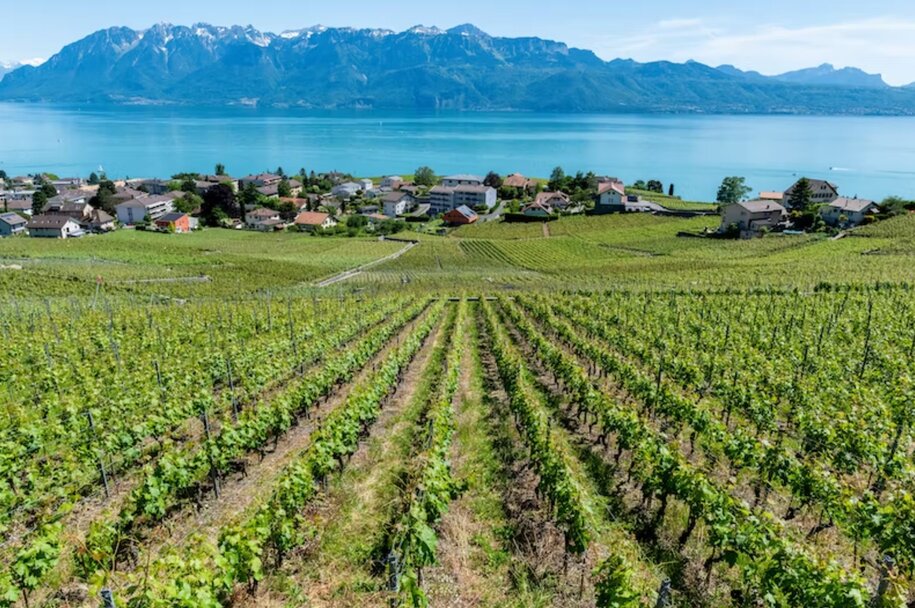
The Lavaux Vineyards, spanning some 30 kilometres, all fall under UNESCO world heritage protection. Photo: Gabriel Garcia Marengo/Unsplash
Monte San Giorgio
On the border between Switzerland and Italy sits the pyramid-shaped, wooded mountain of Monte San Giorgio. The mountain rises to 1,097 metres above sea level and is regarded as one of the best fossil records of marine life from the Middle Triassic Period (245–230 million years ago).
Jungfrau-Aletsch
The Swiss Alps Jungfrau-Aletsch protected area is located between the cantons of Bern and Valais and is the first site in the Alps to be inscribed on UNESCO’s World Heritage List. The area is of exceptional global value not only for its beauty, but also for the wealth of information it provides regarding its mountains, glaciers, and the effects of climate change.
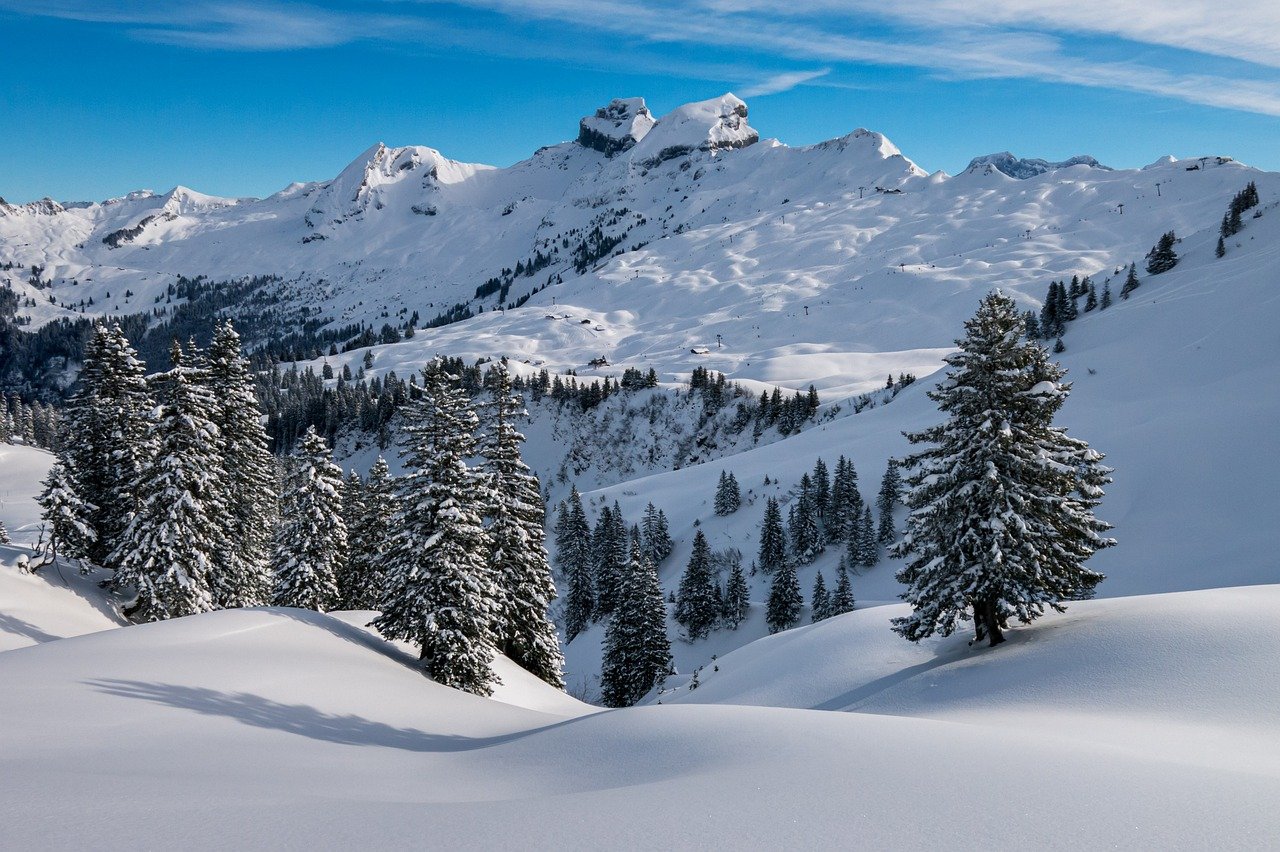
Swiss Alps Image by Jörg Vieli from Pixabay
Abbey of St Gall
Now a dissolved abbey (1805), the Abbey of Saint Gall is located in the city of St. Gallen and serves as a great example of a Carolingian monastery. The abbey’s conventual area was rebuilt in the Baroque style in 1755 through to 1768, which is still evident when viewing its cathedral and library today. The latter is considered one of the oldest and finest libraries in the world and features priceless manuscripts, such as the earliest-known architectural plan drawn on parchment.
Benedictine Convent of St John at Müstair
The Abbey of Saint John, which stands in a valley in Graubünden, is an early medieval Benedictine monastery containing Switzerland’s most important series of figurative murals, painted circa 800 AD, along with Romanesque frescoes and stuccoes. The convent is still an active religious centre for Benedictine nuns whose structured life is a balanced mix of prayer, work, and spiritual reading.
Prehistoric Pile Dwellings around the Alps
These prehistoric pile dwellings around the Alps are a series of 111 small individual sites encompassing the remains of prehistoric pile-dwelling settlements in and around the Alps. These settlements, based around the edges of lakes, wetlands, and rivers, are estimated to have been built from circa 5000 and 500 BC. They give insight into life in prehistoric times during the Neolithic and Bronze Age in Alpine Europe.
View this post on Instagram
The Architectural Work of Le Corbusier
Chosen from the work of Swiss-French architect Le Corbusier, the 17 building projects are spread over seven countries and demonstrate how the Modern Movement architecture broke with the past. Visitors can see two of these magnificent works of architecture in Geneva and Corseaux.
Swiss Tectonic Arena Sardona
The country’s Tectonic Arena Sardona includes some 32,850 hectares of predominantly mountainous landscape spanning 19 communities and is considered the world’s best site to study the processes and mechanisms behind mountain building. The “tectonic arena” is living proof of how the collision of the African and European continental plates thrusted older, deeper rocks on top of much younger rock formations.
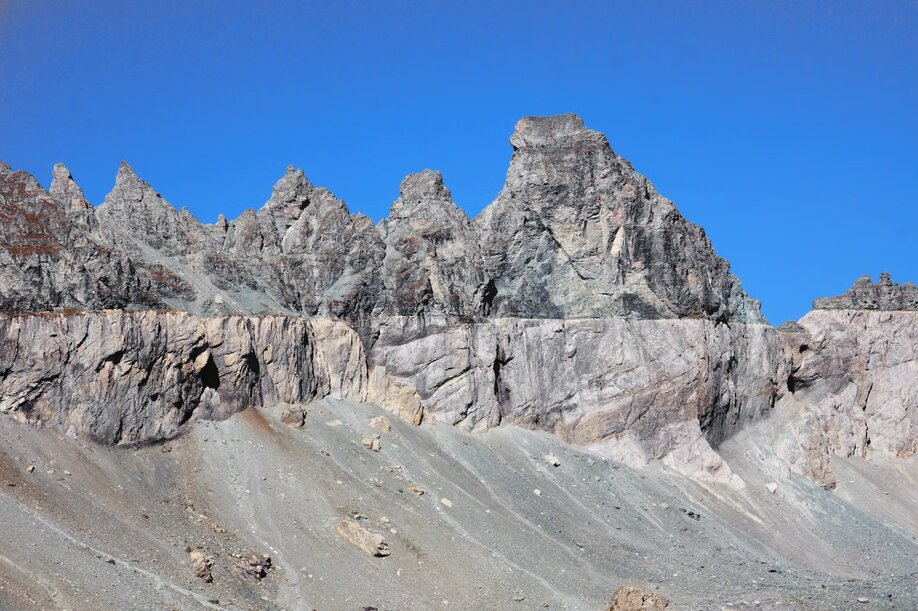
The Tectonic Arena Sardona is considered one of the world's most significant geological sites. Photo: Robi Hofmann/Unsplash
Ancient and Primeval Beech Forests of the Carpathians and other European Regions
This transnational heritage site comprises 94 parts in 18 countries, two of which are based in Switzerland. Solothurn’s Bettlachstock forest, which is home to many ancient beeches, has only been UNESCO-protected since 2021. The forest has not been managed for 35 years and therefore has a high proportion of old trees – the oldest being over 200 years old. The Ticino-based Valli di Lodano, Busai and Soladino also joined the list in 2021.
Comments
See Also
Whether you’re visiting Switzerland for the first time or are simply in the mood to discover more of your new home country, these 13 UNESCO World Heritage sites are a great place to start.
Old City of Bern
The Old City (Altstadt) of Switzerland’s capital has been a UNESCO World Heritage Site since 1983. When walking its charming cobblestone streets and taking in the many Renaissance-style fountains, sandstone buildings and six kilometres of arcades, it’s not surprising to learn that the Old City’s layout has remained largely unchanged since its construction during the 12th to 15th century.

Three Castles of Bellinzona
The Bellinzona sites consist of a group of fortifications clustered around the castle of Castelgrande, which overlooks the entire Ticino valley and connects to castle Montebello via a series of walls originally erected to protect the old city. The sites became UNESCO-protected in 2000 and additionally include a third castle, the Sasso Corbaro, which was built outside the city.
Rhaetian Railway in the Albula / Bernina Landscapes
The Rhaetian Railway in the Albula and Bernina Landscapes combines two historic railway lines that cross the Swiss Alps through two passes offering spectacular views to locals and tourists alike. Built in the 20th century, the lines enable easy and fast access to previously isolated alpine settlements via an overall 55 tunnels and galleries. They also sport an impressive 196 viaducts and bridges.

La Chaux-de-Fonds / Le Locle
Built some 1,000 metres above sea level in the Jura mountains on land ill-suited to farming, La Chaux-de-Fonds and Le Locle are sometimes referred to as the very foundation of the watchmaking industry. Watch enthusiasts are well advised to visit La Chaux-de-Fonds’ Musée International d'Horlogerie. The museum is home to more than 4,500 collection pieces, including 2,700 watches and 700 wall clocks.
Lavaux, Vineyard Terraces
Protected since 2007, the Lavaux Vineyard Terraces extend for around 30 kilometres along the south-facing northern shores of Lake Geneva from the Chateau de Chillon - all the way to the eastern outskirts of Lausanne. The terraces date back to the 11th century when the area was under the rule of Benedictine and Cistercian monasteries.

Monte San Giorgio
On the border between Switzerland and Italy sits the pyramid-shaped, wooded mountain of Monte San Giorgio. The mountain rises to 1,097 metres above sea level and is regarded as one of the best fossil records of marine life from the Middle Triassic Period (245–230 million years ago).
Jungfrau-Aletsch
The Swiss Alps Jungfrau-Aletsch protected area is located between the cantons of Bern and Valais and is the first site in the Alps to be inscribed on UNESCO’s World Heritage List. The area is of exceptional global value not only for its beauty, but also for the wealth of information it provides regarding its mountains, glaciers, and the effects of climate change.

Abbey of St Gall
Now a dissolved abbey (1805), the Abbey of Saint Gall is located in the city of St. Gallen and serves as a great example of a Carolingian monastery. The abbey’s conventual area was rebuilt in the Baroque style in 1755 through to 1768, which is still evident when viewing its cathedral and library today. The latter is considered one of the oldest and finest libraries in the world and features priceless manuscripts, such as the earliest-known architectural plan drawn on parchment.
Benedictine Convent of St John at Müstair
The Abbey of Saint John, which stands in a valley in Graubünden, is an early medieval Benedictine monastery containing Switzerland’s most important series of figurative murals, painted circa 800 AD, along with Romanesque frescoes and stuccoes. The convent is still an active religious centre for Benedictine nuns whose structured life is a balanced mix of prayer, work, and spiritual reading.
Prehistoric Pile Dwellings around the Alps
These prehistoric pile dwellings around the Alps are a series of 111 small individual sites encompassing the remains of prehistoric pile-dwelling settlements in and around the Alps. These settlements, based around the edges of lakes, wetlands, and rivers, are estimated to have been built from circa 5000 and 500 BC. They give insight into life in prehistoric times during the Neolithic and Bronze Age in Alpine Europe.
View this post on Instagram
The Architectural Work of Le Corbusier
Chosen from the work of Swiss-French architect Le Corbusier, the 17 building projects are spread over seven countries and demonstrate how the Modern Movement architecture broke with the past. Visitors can see two of these magnificent works of architecture in Geneva and Corseaux.
Swiss Tectonic Arena Sardona
The country’s Tectonic Arena Sardona includes some 32,850 hectares of predominantly mountainous landscape spanning 19 communities and is considered the world’s best site to study the processes and mechanisms behind mountain building. The “tectonic arena” is living proof of how the collision of the African and European continental plates thrusted older, deeper rocks on top of much younger rock formations.

Ancient and Primeval Beech Forests of the Carpathians and other European Regions
This transnational heritage site comprises 94 parts in 18 countries, two of which are based in Switzerland. Solothurn’s Bettlachstock forest, which is home to many ancient beeches, has only been UNESCO-protected since 2021. The forest has not been managed for 35 years and therefore has a high proportion of old trees – the oldest being over 200 years old. The Ticino-based Valli di Lodano, Busai and Soladino also joined the list in 2021.
Join the conversation in our comments section below. Share your own views and experience and if you have a question or suggestion for our journalists then email us at [email protected].
Please keep comments civil, constructive and on topic – and make sure to read our terms of use before getting involved.
Please log in here to leave a comment.